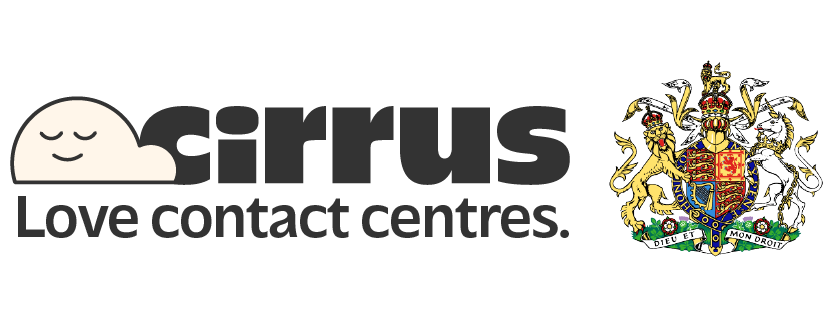What is a virtual agent?
A virtual agent is a digital tool that interacts with users through voice or chat to provide information, solve problems, or complete tasks. Unlike basic chatbots, virtual agents use artificial intelligence, natural language processing, and natural language understanding to interpret user intent and respond in real time.
These AI-powered assistants are designed to handle both routine customer queries and some complex issues, reducing the need for immediate human intervention. They are commonly used in modern contact centre operations, where they help streamline support across multiple digital channels.
How virtual agents work
Virtual agents analyse what a person says or types and match it to known customer intents. They pull information from a knowledge base or connect to backend systems to provide answers or carry out actions. Their responses may come through a conversational interface in a mobile app, a website chatbox, or over the phone using interactive voice response.
In more advanced setups, virtual agents are connected to tools like omni-channel communication systems or CRM platforms, allowing them to personalise interactions based on past conversations, preferences, or service history.
Benefits of virtual agents
Virtual agents offer clear advantages in today’s customer service environment:
- Faster response times: Handle simple requests instantly
- 24/7 availability: Provide service outside of standard business hours
- Scalability: Manage thousands of conversations at once
- Cost savings: Reduce the need for large human support teams
- Consistent responses: Eliminate variation in how questions are answered
- Improved issue resolution: Guide users with real-time assistance, sometimes without escalation
- Support for human agents: Allow staff to focus on complex queries that require critical thinking
When linked to workforce optimisation tools, virtual agents also help balance staffing needs and improve agent productivity.
Features of a virtual agent
Today’s virtual agent platforms come with powerful features that make them adaptable and efficient:
- Natural language understanding for interpreting different ways users ask questions
- Decision tree flow to guide conversations toward solutions
- Integration with third-party platforms through APIs
- Support for voice assistants and chat-based tools
- Sentiment analysis to detect frustration or urgency
- Real-time handoff to live contact centre agents when needed
- Visual workflows for administrators to create or adjust interaction flows easily
Some platforms also offer drag-and-drop tools, so business users can create and update digital bot flows without coding. These visual builders allow for quick creation of prebuilt conversations, especially for common inquiries or repetitive requests.
Virtual agents vs traditional chatbots
While chatbots are rule-based and typically limited to scripted responses, virtual agents use AI to interpret language, detect intent, and hold multi-turn conversations. Chatbots often fail on complex tasks or misunderstand queries, whereas virtual agents learn from past interactions and improve over time.
A traditional chatbot may only be able to answer a basic question, while a virtual agent can process customer support requests, retrieve account information, and complete service workflows without needing a human.
Real-world examples of virtual agent use
1. Telecom customer support
A telecom company uses a virtual agent to handle routine tasks like checking data usage, paying bills, and updating plans. Complex requests are transferred to support staff with full conversation history.
2. Public sector
In a government and healthcare setting, virtual agents help users schedule appointments, access vaccination info, or file documents, making public services more accessible.
3. Higher education
Universities use virtual chat agents to help students with admissions, deadlines, campus queries, and financial aid, saving time for both students and staff.
These agents function across voice assistants, chat, and even integrate with systems like Microsoft Teams for internal use.
Getting started with a virtual agent
If you’re exploring how to get a virtual agent, the following steps can help you get started:
- Define your goals
Identify what kind of inquiries or workflows the agent will handle. - Select a platform
Look for a solution that supports AI-powered knowledge management, allows easy setup, and integrates with your existing systems. - Map customer journeys
Understand what your users ask most frequently. Use that to create flows that mirror real customer behaviour. - Train and test
Use data from previous customer interactions and support tickets to teach the agent how to respond. Adjust based on early performance. - Roll out in phases
Start with common areas like password resets or product information, then expand into complex requests over time. - Evaluate and improve
Measure contact resolution, response times, and customer satisfaction. Virtual agents should evolve with your services.
In cases where your support teams handle sensitive queries, use dedicated tools for secured payments and accessibility features to ensure trust and compliance.
When to escalate to a human agent
Even the smartest AI needs to know when to hand over a conversation. A good virtual agent solution should:
- Detect when a query is too complex
- Recognise frustration or emotion
- Allow users to request live support
- Transfer full chat context to a customer service agent
This seamless blend of AI and human support creates exceptional customer experiences. It also gives contact centre teams visibility into common problems, missed opportunities, and emerging trends.
Frequently asked questions
What is a virtual agent used for?
It automates responses to support inquiries, handles service workflows, and guides customers to solutions.
How is it different from a chatbot?
Chatbots are rule-based, while virtual agents use AI and natural language to understand intent and resolve more complex scenarios.
Can virtual agents replace human agents?
Not entirely. They complement humans by handling repetitive and low-value tasks, allowing people to focus on higher-level conversations.
What kind of queries can they handle?
They work best for account info, order updates, common service issues, and tasks like scheduling or data capture.
Do they work on voice and chat?
Yes. Through integration with tools like omni-channel platforms, they can be deployed across messaging apps, web chat, and voice services.
Final thoughts
Virtual agents are changing the way businesses deliver service at scale. Whether used to handle repetitive questions, manage digital workflows, or increase deflection from live support, these tools bring real, measurable benefits.
Besides improving efficiency, they help create smoother customer journeys, offer real-time assistance, and free up teams to focus on what matters most: delivering value through genuine human interaction.
To explore the features that high-end virtual agents support, leverage an ideal contact centre platform. If you’re ready to see how it could work in your environment, you can request a demo to get started.
Your Contact Centre, Your Way
This is about you. Your customers, your team, and the service you want to deliver. If you’re ready to take your contact centre from good to extraordinary, get in touch today.


